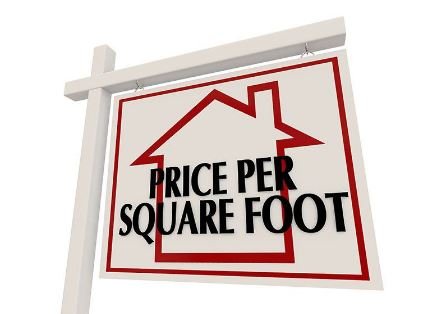I’ll only use one example as they all follow a similar trend. The house in question was valued around $170,000 with none of the value attributed to the solar panels as there isn’t sufficient sales data in our area to extract a contributory value for the amenity of solar panels. The owner purchased 20 panels for $40,000 using financing which was to be amortized over 20 years with a 3.5% interest rate. The purchaser decided against purchasing the battery bank which would have added another $20,000. That is important to note as a battery bank allows you to store the energy generated by the solar panels. Solar panels do not store electricity so when they are not generating electric (like at night) you will be using the electricity provided by your electric company and not from your panels.
The owner stated that the company marketing these panels was very “pushy” and made it so that they only had a couple days to decide. They were in the area and that was the only time they’d be given the opportunity to buy into these panels. They also stated that the amount of panels he was using would provide a sufficient amount of electricity so that they wouldn’t have an electric bill once the system was installed.
However, this did not turn out to be true. Currently their average bill is about $50 - $70 a month which is about $100 savings per month in the electric cost from what they were paying prior to the installation. There is also an additional savings on the gas bill as they converted their main heat source from a gas furnace (now used as back up for when the electric goes out) to an electric heat pump. For sake of example, lets conservatively estimate they are saving $200 average per month ($100 savings in electric and now not having a gas bill). You be the judge as to whether this was a good investment. To quote the owner, “If I had to do it all over again, I would not have done it.”
To break this down: $40,000 amortized over 20 years at a rate of 3.5% calculates to a monthly payment of $231.98 and a total cost of $55,676.50. You would had to have saved at the very least that much over the 40 year period of time in order to break even. We haven’t even discussed that solar panels have an economic life to them and over time have a reduced rate of efficiency. At some point, they need to be replaced and have an average life expectancy of 25 - 30 years. The older they are, the lower their capacity to generate solar power.
Now…. just the facts.
HOW MANY SUNNY DAYS DO WE TYPICALLY GET IN THE GREENSBURG, PA AREA?
According to online sources, Greensburg, PA gets about 163 sunny days per year. This includes sunny and partly sunny days. While solar panels still can generate power on cloudy days, they just might generate less power, depending upon the quality and efficiency of your panels
IS THE LOAN FOR PURCHASING SOLAR PANELS TRANSFERRABLE IF I SELL MY HOUSE?
Most loans utilized for the purchase of solar panels are not assumable. If you decide to sell your property prior to the payoff of these loans, the proceeds for the sale of the property would need to cover the amount of any existing mortgage and the additional loan for the solar panels in order for that the panels to be paid off. If not, then you would still be responsible for paying the entirety of the loan whether you own the home or not.
ARE THERE TAX CREDITS FOR SOLAR PANELS?
There are credits, however, there are a number of factors that determine the amount of credits and how they are applied. For information check out this site:
https://www.energy.gov/eere/solar/homeowners-guide-federal-tax-credit-solar-photovoltaics
WHAT IS THE LIFE EXPECTANCY FOR SOLAR PANELS?
According to an article found on GreenBiz,
“Solar power is having its hockey stick moment. Since the early 2000s, the amount of solar panels being installed worldwide has been growing exponentially, and it’s expected to continue to do so for decades. By the end of 2015, an estimated 222 gigawatts worth of solar energy had been installed worldwide. According to a recent report from the International Renewable Energy Agency, that number could reach 4,500 GW by 2050.
But the solar panels generating that power don’t last forever. The industry standard life span is about 25 to 30 years, and that means that some panels installed at the early end of the current boom aren’t long from being retired. And each passing year, more will be pulled from service — glass and metal photovoltaic modules that soon will start adding up to millions, and then tens of millions of metric tons of material.”
WHAT DOES A BATTERY BANK DO FOR SOLAR POWER?
The battery bank allows you to store the energy produced by the panels during non-peak hours. Here is a helpful comprehensive link from SolarReviews.com regarding solar battery banks:
https://www.solarreviews.com/blog/is-solar-battery-storage-worth-it-given-current-solar-battery-cost
WHAT WILL IT COST FOR ME TO INSTALL A SOLAR POWER SYSTEM ON MY PROPERTY?
According to Bob Vila’s website, “the typical cost of solar panels ranges between $17,000 and $34,174, with the national average at $25,633.” This represents the cost of the panels and does not represent the added cost of the battery bank system.
For a more comprehensive article on the cost of a solar energy system check out this article from Nerd Wallet:
https://www.nerdwallet.com/article/finance/solar-panel-cost#:~:text=With%20installation%2C%20an%20average%20residential,to%20pay%20for%20solar%20panels.
Now that you know the facts, will a solar energy system add value to your home?












